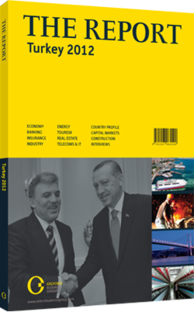Refreshing the page: Providing content in new and innovative ways
Recent developments in IT infrastructure and the country’s young demographic – the youngest in Europe – are compelling Turkey’s media sector to adapt to a new industry landscape. Traditional methods and platforms for accessing media are declining, replaced by new demands that require creative innovation to keep revenues high and growth sustainable.
ONLINE & UPWARD: Technological improvement is a major growth opportunity for online businesses. Indeed, as of 2011, Turkey had the eighth-highest fibre-optic cable penetration rate in the G20. The development of 3G has also been spectacular with 31%, penetration rate in mid-2011, surpassing the EU average of 30%. According to Vodafone, in May 2011 smartphones accounted for 16% of mobile phones in the country. “As the speed of the internet and infrastructure improves, the entire media landscape will continue to shift,” said Kerem Alkin, the director of Bloomberg HT. “Turk Telekom and Superonline invest $2.5bn-3bn per year in fibre-optic cable, so the combinations of platforms and media services will continue to advance.” In 2011 the median age of the population was 29. 2-years-old, and the population as a whole numbered 74.7m, according to the state statistics agency, TurkStat. Turkey’s under-29 population is therefore second only to Russia among European nations. This young demographic has access to a strong IT infrastructure and growing per capita incomes, which rose from $2905 to $10,576 between 2001 and 2011, according to the IMF. These factors have significantly influenced new expectations of the media. “3G is transforming the web,” said Tümay Asena, the CEO of Nokta Medya, a Turkish digital media company. “This may reduce dependency on ADSL, as time spent on PCs is falling with mobiles and tablets become more popular. For example, we recently had 20,000 downloads for our game application in a single week; this is a paradigm shift.” Reactions to the changing technological scene are varied. Some agencies have resisted major online investment, preferring to concentrate on print or TV, while others have welcomed the shift, with Doğan and Doğuş holdings seemingly leading the charge. Overall, most companies have made significant moves to capture shares of the mobile market. This has in turn spawned a number of partnerships between content providers and hardware manufacturers or retailers.
Content-hardware partnerships are evidenced by the uptick of “smart” or web-enabled devices, like TV, which has become a highly competitive market. Samsung has led the way, engaging media outlets by providing content that comes standard with its smart TVs. Other companies are following the trend, directly linking content with platforms, sites and devices. TTNET, the largest internet service provider in Turkey, for example, has arranged to provide Turkish newspapers via an application on new iPads sold in the country.
TRAILBLAZING: Meanwhile, much off-line content is starting to be distributed by smaller online firms. TV channels like TRT and Doğuş’ NTV are available on Nokta Medya’s website. Similar sites provide a range of news and media clips, and internet users are increasingly turning to these platforms instead of the content producers’ original sites. This demonstrates how smaller outfits have grasped new media’s power of interaction and networking better than established firms. As a result, new market players are able to build larger audiences and provide more popular forums, and these methods of distribution are paving the way for other companies looking to break into the nascent market.
Such innovations are frustrating older business models, as monetising online activity is a global challenge. Rather than set up pay walls, many websites prefer to sell advertising backed by high page views. In Turkey this approach is starting to pay dividends, with the internet now the third-largest source of ad revenue in Turkey, according to Doğan, whose newspaper Hü 12% between 2006 and mid-2011. Thus Turkey’s online media business is starting to evolve from good ideas to long-term bankability, with more growth expected.
You have reached the limit of premium articles you can view for free.
Choose from the options below to purchase print or digital editions of our Reports. You can also purchase a website subscription giving you unlimited access to all of our Reports online for 12 months.
If you have already purchased this Report or have a website subscription, please login to continue.

